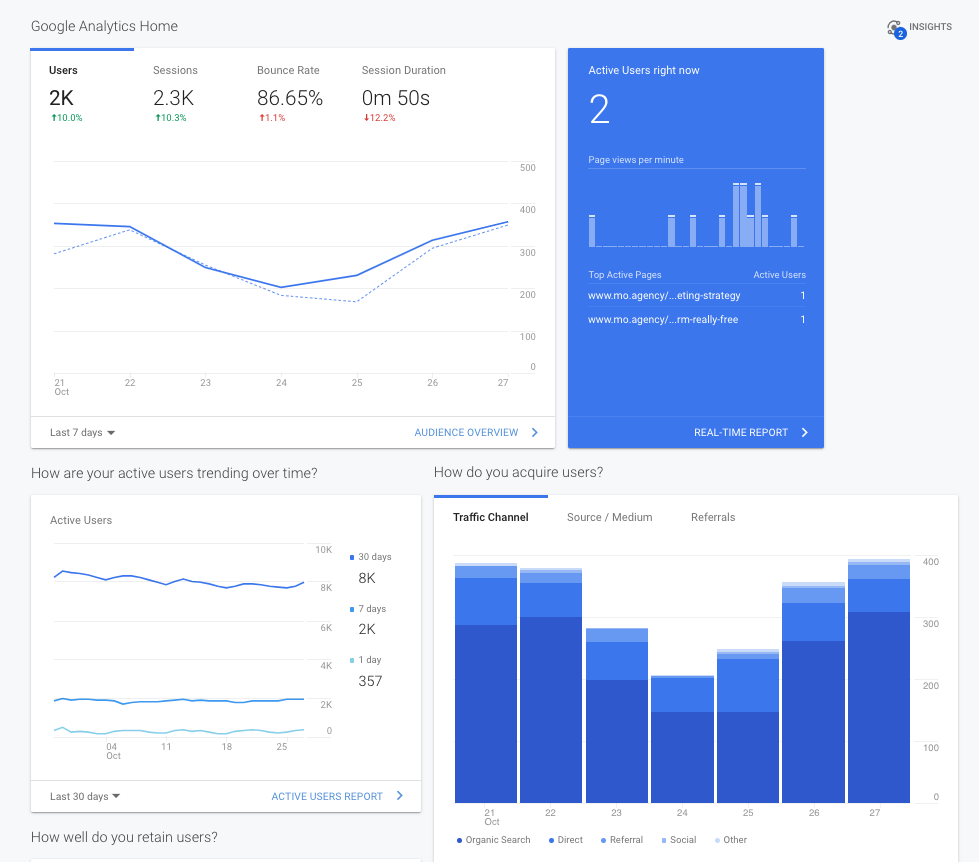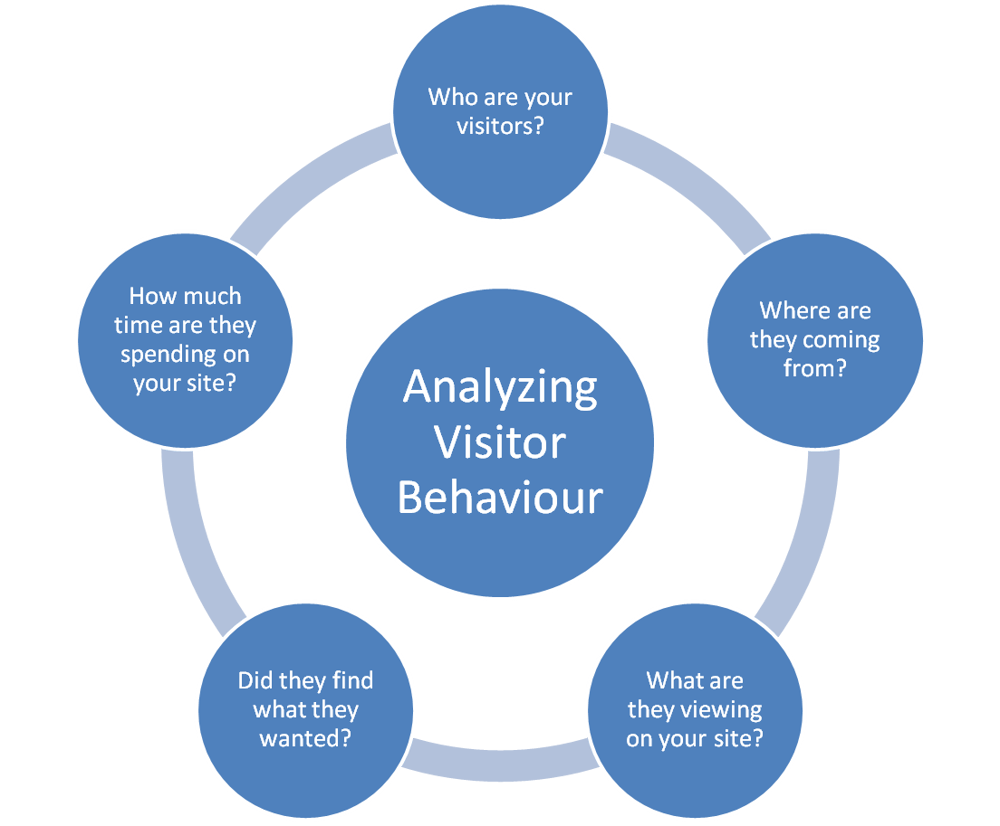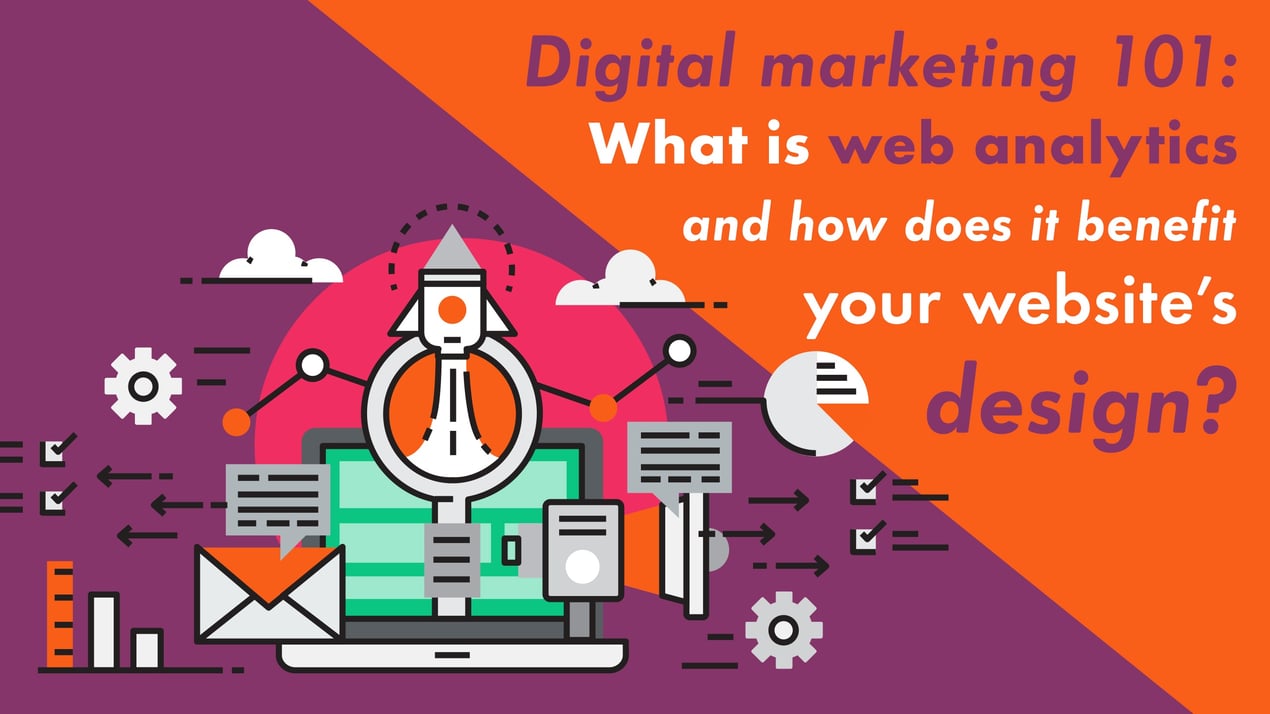One of the greatest benefits of Digital Marketing in the modern day is the fact that you can track just about any aspect of your website imaginable; thanks to web analytics tools such as Google Analytics
It is this data which gives you the power to maximise all your website efforts and improve overall User Experience and User Interface - ultimately leading to more campaign and website goals being reached.
Web Analytics is the measurement, collection, analysis, and reporting of Internet data for the purposes of understanding and optimising Web usage.
Having accurate, focused, and well-presented data has become so important in this day and age that it cannot be separated from the success of any Digital Marketing campaigns.
Without accurate, relevant, and well-focused data, it becomes near impossible for Digital Marketing heads to make sound and effective decisions which reap desired results; Forbes’ Nicole Martin explains.
Actually, running digital marketing campaigns without web analytics is like shooting in the dark and hoping to hit a target; it just doesn’t work.
...But What Exactly Is Web Analytics?
According to tutorials point, Web Analytics is ‘the measurement, collection, analysis, and reporting of Internet data for the purposes of understanding and optimising Web usage’.
It is through the data collected by web analytics processes that digital marketers are able to better understand the users of their site, their behaviour, and activities; and by so understanding the said data, digital marketing agents are then able to measure relevant information such as:
- Site performance when measured against the set KPI’s and goals (web traffic, impressions, click through rates, scroll depths, page views, bounce rates, conversion rates, and etc)
- Insight on user behaviour and needs; and how those needs can be met.
- The site’s weak points, such as poor performing pages, and how they can be best improved for maximum results.

The Benefits of Web Analytics Like Google Analytics
Google Analytics helps you keep an eye on the activities and behaviours of website users.
You are able to see key metrics like unique users, unique sessions, top performing website content, the performance of different traffic sources and much more.
With the ability to view your conversion funnel, you can easily optimise your website’s user journey to decrease points of user drop-off.
You gain key insights such as geographical locations and top traffic sources, and your plan of action can be altered accordingly.
Analytics lets you monitor ROI and see if you are achieving your goals. It also integrates into your social media platforms meaning you can monitor all your digital channels.
Top Web Metrics and Why They Matter
Web Traffic
What It Is : This refers to the number of people who have visited your website within a specified period of time. This could either be direct traffic, paid traffic, or organic traffic users.
Why It Matters : The number of visitors to a site equals the number of opportunities you have to add new customers. The more traffic you have the more opportunities you also have.
Top Landing Pages
What It Is : This refers to the first page your visitors land on when they visit your website. This could be the home page, a well optimised blog page, or any other page on your site
Why It Matters : Top landing pages give a strong indication to how well your site pages are optimised, how relevant your keywords are to searched terms, and can also give insights to how you can move visitors through a conversion funnel on this page.
Impressions
What It Is : This gives insight into the number of people who saw a specific page or website while browsing the net, on search engines such as Google, or even paid ads.
Why It Matters : This is a strong indicator of the reach the website has and is also closely related to website brand awareness. The higher the site impressions is also the higher online brand awareness.
Click Through Rate
What It Is : CTR measures the number of clicks advertisers receive on their ads per number of impressions, or more simply put, the percentage of impressions which resulted in clicks.
Why It Matters : It gives an indication of how relevant your ads are to searchers, and also contributes to the site and page quality ranking, which ultimately determines your Ad Rank in the search engines.
Scroll Depth
What It Is : It allows you to measure how far down the page your readers scroll.
Why It Matters : A high scroll depth is an indicator of how well users are engaging with your page, and also indicates the readability, relevance, and structure of your content.
Page Views
What It Is : The number of times a page has been viewed on a website as tracked by a web analytics tool such as Google Analytics
Why It Matters : Without website visitors, there can be no ad sales and no business. Page Views make understanding and optimising metrics more critical, which helps in better decision making where ads are concerned.
Bounce Rates
What It Is : Bounce rate measures the percentage of people who go to your site, then leave after viewing just one page; instead of continuing to view other pages within the same site. A high bounce rate is bad, and a low bounce rate is good.
Why It Matters : Bounce rate indicates whether the page content is irrelevant, engaging, and whether your content is targeted to the visitors wants and needs or not.
Conversion Rates
What It Is : A conversion rate is the percentage or the rate at which visitors to your website complete a desired goal, such as filling out a form or making a purchase.
Why It Matters : Conversion rates are arguably the most important metric as they measure the success of all your digital marketing efforts, measures how many of your leads convert into sales, and are directly linked to your ROI.
Analysing Visitor Behaviour To Implement Web Analytics

With web analytics, you can make certain that your website content and overall website user interface (UI) and user experience (UX) are tailored to the behaviour and interests of their target audience.
From there, you’re able to see how your audience are finding your website, and how they are using social media (when and where) and other digital channels such as email.
With platforms like Google Analytics you can adapt to the demands of your digital audience on the fly, which means your business can be more agile than the competition.
You can monitor website users and optimise your business’s website to appeal to the navigational tendencies of your customers.
This could mean updating CTAs, the placement of certain website UI elements or the position of imagery and the choice of font style.
Conclusion
From observing how people behave and interact with your website, you can easily formulate and update your digital marketing plan of action.
Also, measuring ROI, noticing how sales trends are progressing and predicting future trends for your website are all possible with web analytics. Such is the power of data!
Utilise the power of web analytics, and soon your business will have the upper-hand in the online space.
Read more of the Digital Marketing 101 blog series and be educated on every digital marketing topic under the sun. Contact MO Agency today if you need any assistance with discovering and maximising web analytics for your business.





